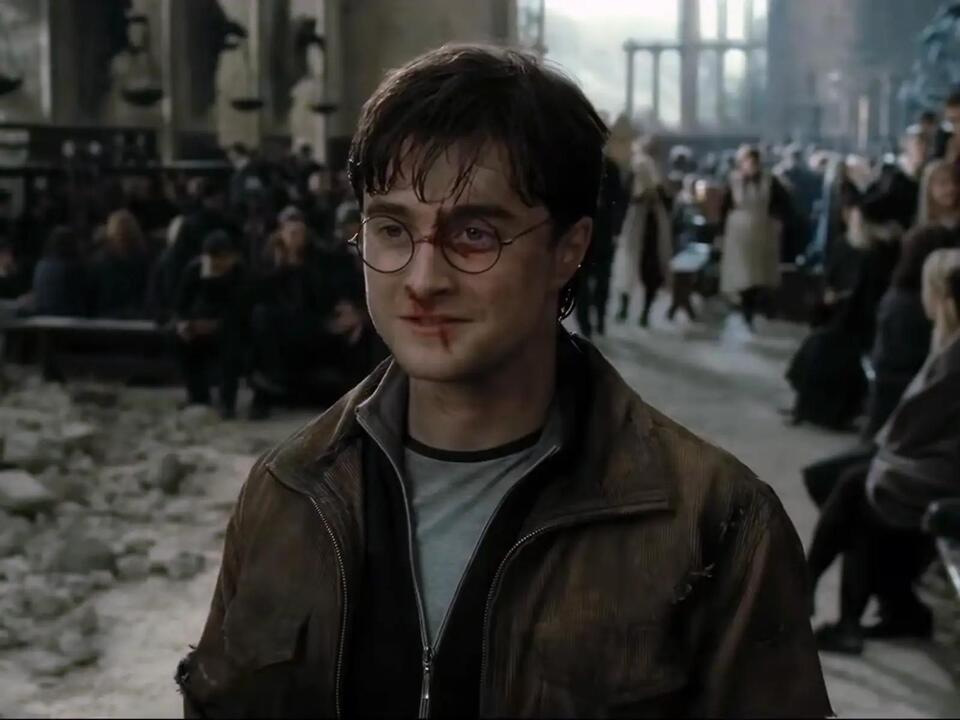Physical Address
304 North Cardinal St.
Dorchester Center, MA 02124
Physical Address
304 North Cardinal St.
Dorchester Center, MA 02124

Warner Bros.
Harry Potter is celebrated as the courageous hero of his eponymous fantasy series, but what truly changed after he vanquished Voldemort?
The real evils troubling the Wizarding World go deeper than one influential villain. Based on Harry’s thoughts shortly after the Battle of Hogwarts, it appears his actions didn’t tackle the core of the problem.
In the last sentence of the “Deathly Hallows” before the series’ epilogue, we learn Harry’s thoughts after the Battle of Hogwarts:
“He turned away from the portraits, thinking now only of the four-poster bed lying waiting for him in Gryffindor Tower, and wondering whether Kreacher might bring him a sandwich there.”
Kreacher, a house-elf, essentially serves as Harry’s personal slave. In the Wizarding World, house-elves are bound and compelled to perform manual labor even though wizards could easily complete those tasks using, well, magic.
However, hierarchies aren’t about practicality. They are about power. In this world, that power means preserving the status of “pure-blood” wizards.
Voldemort used wizard-supremacist ideologies to justify his ruthless rise to power, and Harry spent his whole adolescence fighting to defeat him. But just hours after his ultimate victory, Harry seems to endorse the very system Voldemort exemplified, all because he wants a snack.
Perhaps we should give Harry some leniency. After all, he was only 17 when he cast the charm that ended Voldemort’s life. Moreover, the battle — in which house-elves also fought — must have been tiring.
At the series’ conclusion, it feels like the entire Wizarding World has deluded itself into thinking that the war was won the moment Tom Riddle took his last breath.
However, to the discerning eye, it’s clear that Voldemort was never more than a charismatic demagogue. His rise to power was a symptom of a much older and more insidious issue.
Salazar Slytherin attempted to purge Hogwarts of “non-pure-blood” wizards in 990. When Harry arrived at Hogwarts 1,000 years later, wizard society was still enslaving house-elves, denying goblins access to wands, colonizing centaur lands, and marginalizing werewolves.
Despite strained relationships between wizards and magical creatures, the Fountain of Magical Brethren in the Ministry of Magic depicts a centaur, goblin, and house-elf adoringly gazing at a pair of wizards. When injustice becomes law, propaganda becomes duty.
Voldemort wasn’t even the first villain to exploit wizard supremacy for power. Grindelwald laid an enduring foundation for him, and Voldemort’s defeat merely prepared the legacy for the next dark wizard.
The series’ epilogue, set 19 years later, shows that wizard supremacy is still alive. As Harry arrives at Platform 9 3/4 to send his children off to Hogwarts, his son Albus worries about being sorted into Slytherin.
The Hogwarts house refused to stand against Voldemort during the Battle of Hogwarts and seemingly retains its bad reputation.
Moreover, Ron nonchalantly admits to using a Confundus charm on a muggle, indicating it’s still acceptable to strip someone of their agency if they’re not a wizard.
The scene at Platform 9 3/4, enveloped in the steam from the Hogwarts Express, feels all too familiar.
As the train departs, envisioning Albus and James Potter settling into their carriages and pulling out food their parents packed for the ride, one can’t help but wonder: Who made their sandwiches?
Source: Business Insider



